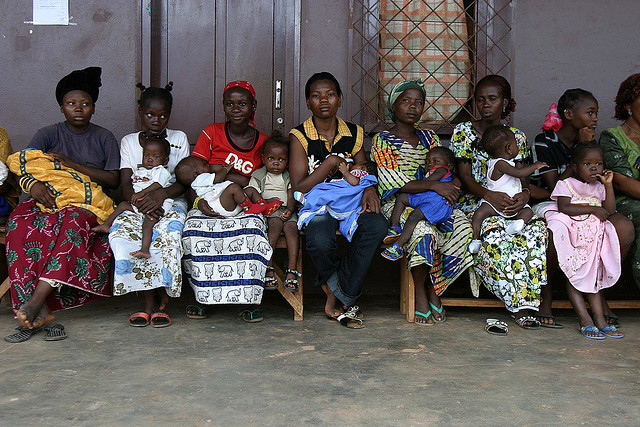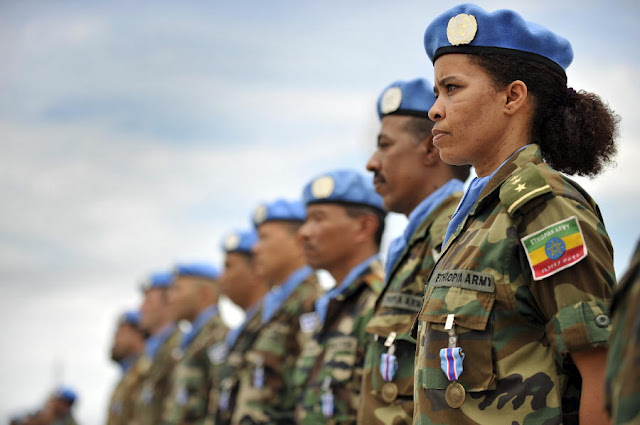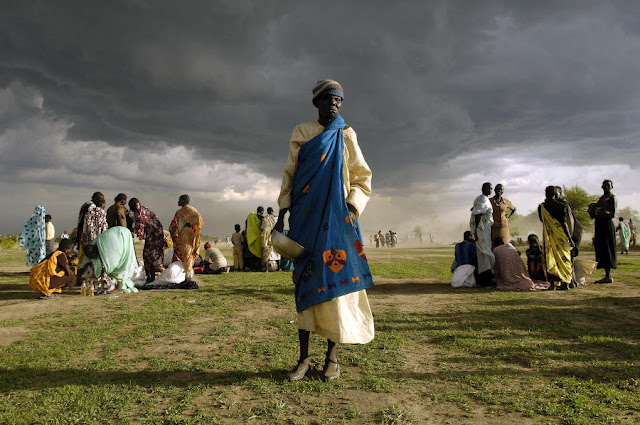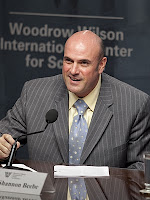Showing posts from category foreign policy.
-
Food and Environmental Insecurity a Factor in North Korean Shelling?
›November 24, 2010 // By Schuyler NullJust two days before dozens of North Korean artillery shells fell on the island of Yeonpyeong off the west coast of Korea, a UN study reported that the DPRK was facing acute food shortages heading into the winter.
In a New York Times report, Choi Jin-wook, of the Korea Institute for National Unification in Seoul, called food “the number one issue.” While Choi just last month praised the resumption of food aid from the South to the North as a “starting point of a new chapter in inter-Korean relations,” she told the Times Wednesday that the North is “in a desperate situation, and they want food immediately, not next year.”
North Korea’s motives are notoriously indecipherable and this latest incident is no exception, but the regime has in the past sought to distract from domestic problems by inciting the international community (the sinking of the Cheonan being the other latest prominent example).
Infrastructure has always been primitive in the North under the DPRK regime, but the country’s tenuous food security situation was made worse this last year by an unusually long and severe winter followed by heavy flooding in the summer. Flooding was so bad during August and September, that the normally silent regime publically announced details of rescue operations around the northern city of Sinuiju. The joint FAO/WFP report put out by the UN does not predicate production will significantly recover in the next year and estimates an uncovered food deficit of 542,000 tons for 2010/11.
“A small shock in the future could trigger a severe negative impact and will be difficult to contain if these chronic deficits are not effectively managed,” Joyce Luma of the World Food Program told The New York Times.
For more on the severe weather events of this summer, including the flooding that impacted the DPRK and pushed the Three Gorge Dam to its stress limits in China, the impact of scarcity and climate change on the potential for conflict, and the intersection of food security and conflict elsewhere, see our previous coverage on The New Security Beat.
Sources: Christian Science Monitor, Food and Agriculture Organization, Los Angeles Times, The New York Times, UN, Washington Post, World Food Program.
Image Credit: Google Maps. -
Nigeria’s Future Clouded by Oil, Climate Change, and Scarcity [Part One, The Delta]
›November 18, 2010 // By Schuyler NullNigeria holds nearly a fifth of the entire population of sub-Saharan Africa. By 2050, it’s expected to pass Indonesia, Brazil, and Bangladesh and take its place among the top five most populous countries in the world, according to UN estimates. But a litany of outstanding and new development, security, and environmental issues – both in the long-troubled Niger Delta in the south and the newly inflamed north – present a real threat to one of West Africa’s most critical countries.
A 400-Year Curse Nigeria collected $46 billion in oil revenue during FY 2009, trailing only Saudi Arabia, Iran, and the United Arab Emirates. Despite their country’s mineral wealth, however, roughly 70 percent of Nigerians live below the poverty line, with the oil-producing south facing particularly abject deficiencies.
Nigeria collected $46 billion in oil revenue during FY 2009, trailing only Saudi Arabia, Iran, and the United Arab Emirates. Despite their country’s mineral wealth, however, roughly 70 percent of Nigerians live below the poverty line, with the oil-producing south facing particularly abject deficiencies.
“I have never worked in an area as bereft as the Niger Delta – it is shockingly undeveloped,” said former Wilson Center fellow Deirdre Lapin, in a phone interview with ECSP (listen to the audio embedded above for the full interview). Lapin worked in community development for Shell in Nigeria from 1997-2003 and also spent time at USAID and UNICEF. “Compared to everywhere else I have been, it is without question the most neglected and the least advanced in terms of general development and welfare for the ordinary person,” she said.
According to the UN, the Niger Delta accounts for upwards of 80 percent of Nigeria’s foreign exchange earnings and about 70 percent of total government revenues. Instead of benefiting from its mineral wealth, the delta has suffered tremendous environmental damage that has spurred a grassroots anti-oil (and later anti-government) insurgency. During the oil companies’ drilling drive in the 1970s, it was not uncommon to see large amounts of tar collected on the roots of mangroves and the sides of creeks, and oil slicks were frequent, Lapin said.
The environmental situation in the delta improved as production plateaued, but due to oil theft, poor maintenance, and derelict equipment and pipelines scattered across the delta, spills continue. According to The New York Times, by some estimates, the delta has endured the equivalent of an Exxon Valdez spill every year, for the last 50 years. But there has never been an impartial, empirically based environmental study of the impact of the oil and gas industry on the delta, Lapin said, which would be an important step forward. (A UNEP study is currently underway but has already been criticized for alleged inaccuracy.)
Southern Nigeria’s infamous duality – miserable lack of infrastructure, services, and security in the midst of abundant natural resources – helped give rise to the term “resource curse” among development specialists, a term which has since been applied to similar situations in the Democratic Republic of Congo, Sierra Leone, and even Afghanistan. Lapin pointed out that in the eastern part of the delta, the resource curse actually goes back 400 years, to the slave trade and palm oil.
“Blood Oil” and Scarcity in the Delta
The sophisticated insurgency in the delta began as a response to the oil and gas industry, but has in many ways become dependent on it. Groups of armed “boys” – some of whom are remnants of political-intimidation efforts during the 2003 elections – have become notorious in the delta and abroad, often putting on shows for the media. Some of these groups are loosely organized under the moniker MEND (Movement for the Emancipation of the Niger Delta), with the stated intent of driving the oil companies out of the delta in response to environmental destruction and lack of revenue sharing, but others simply profit through extortion, racketeering, and oil theft (also known as “bunkering”). At the peak of their activities, insurgent activity has cut oil production between 25 and 35 percent, Lapin said, prompting oil companies to move further and further off-shore in recent years.
With unemployment in the delta at 90 percent by some estimates, militancy has become a viable way of life for many. Bunkering can net up to $60 million a day, according to a BBC report. The practice, which former president Umaru Yar’Adua called Nigeria’s “blood oil,” costs the government up to $5 billion annually, and many gangs are rumored to have political connections that protect them in exchange for their services.
Contributing to the delta’s propensity for conflict is the region’s demography.
“There are probably 120 mutually unintelligible languages and dialects that are spoken [in the Niger Delta] and 40 major identifiable ethnic groups,” Lapin said. Because of the number of creeks and lack of infrastructure, the region’s 20 million inhabitants are fractured into many small communities – roughly 80 percent are under 1,500 people, according to Lapin. In addition to its splintered social structure, population growth and years of conflict have left a mass of unemployed delta residents who have adopted a “siege mentality,” as a UN report puts it (a feeling especially prevalent among the young). With three percent population growth and local fish and agriculture sectors on the decline, it is likely the Niger Delta will face increased scarcity in the coming years, further fueling discontent.
“What is truly needed in order to put Nigeria on a solid footing for the future is a government with very clear objectives for the economic and social development of the country, putting those forward as the priorities, changing the style in which governance is taking place today,” Lapin said. “And that will require something of a revolution, a major sea-change.”
Part two on Nigeria’s future – The Sahel – addresses conflict, scarcity, and demographics in the northern part of the country and concludes with recommendations for the future.
Sources: BBC, CIA, Energy Information Agency, The Guardian, The New York Times, Population Reference Bureau, Reuters, UN.
Photo Credit: “Niger Delta oil disaster,” courtesy of flickr user Sosialistisk Ungdom – SU, and a NASA Space Shuttle Overflight photo of the Niger Delta, courtesy of NASA. -
Disease in the Developing World
Poverty, Politics, and Pollution
›November 15, 2010 // By Ramona GodboleA look at the most common illnesses that kill people in the developing world reveals, for the most part, easily preventable and/or treatable diseases and conditions, highlighting the deep disparities between health systems in rich and poor countries. But many of the causes and solutions to these common diseases are also linked to political and environmental factors as well as economic.
Cholera: “A disease of poverty”
Ten months after the earthquake that killed more than 230,000 people, Haiti is facing yet another disaster – a cholera outbreak. The current health crisis highlights broader structural and political issues that have plagued Haiti for years.
Cholera, an intestinal infection caused by bacteria-contaminated food or water, causes severe diarrhea and dehydration, but with quick and effective treatment, less than one percent of symptomatic people die according to the World Health Organization. According to BBC, as of November 15, more than 14,000 people have been hospitalized and over 900 deaths have been attributed to cholera in Haiti thus far.
Even before the earthquake, conditions in Haiti, the poorest country in the Western hemisphere, were bleak. The country has very high maternal and child mortality rates (again, highest in the Western hemisphere), and is in the midst of an ongoing environmental crisis, due to deforestation, soil loss, and flooding.
Less than 40 percent of the Haitian population has access to appropriate sanitation facilities and clean water is scarce, according to UNICEF. Displacement, rapid population growth, and destroyed infrastructure in the wake of the earthquake exacerbated already poor conditions and public health officials warned of the increased risk of cholera and other diarrheal diseases after the disaster.
Today these fears have become reality. While public health messages urging Haitians to wash their hands, boil drinking water, and use oral rehydration salts are working to control the current outbreak, long-term solutions to prevent future outbreaks will require much more systematic changes.
As Partners in Health Chief Medical Officer Joia Mukherjee puts it, cholera is “a disease of poverty.” Citing a joint report from Partners in Health and the Robert Kennedy Center for Human Rights, Mukherjee notes that in 2000, loans from the Inter-American Development Bank to improve water, sanitation, and health (including the public water supply in the Artibonite Valley, where the cholera outbreak originated) were blocked for political reasons by the U.S. government, in an effort to destabilize former President Aristide.
The failure of the international community to assist Haiti in developing a safe water supply, writes Mukherjee, has been a violation of the basic human right to water. To halt the current cholera epidemic and prevent future outbreaks, providing water security must become a priority in the reconstruction efforts of the international community.
Politics and Polio
Recent reports have indicated that the global incidence of polio, a highly infectious, crippling, and potentially fatal virus, is significantly declining and a new vaccine is renewing hopes of eradication. Nigeria, one of the few countries where polio continues to be endemic, has also made major progress over the last few years.
But the situation was very different just a few years ago. In 2003 religious and political leaders in Northern Nigeria banned federally sponsored polio immunization campaigns, citing “evidence” that the polio vaccine was contaminated with anti-fertility drugs intended to sterilize Nigerian women. The boycott led to an outbreak of the disease that spread to 20 countries and caused 80 percent of the world’s cases of polio during the length of the ban, according to a study in Health Affairs.
While the boycott was eventually stopped through the combined efforts of local, national, and pressure, the boycott serves as a useful reminder that global health problems can have political, rather than biological or behavioral, origins.
Combating Climate Change and Pneumonia
Studies from the World Health Organization indicate that exposure to unprocessed solid fuels increases pneumonia risk in children by a factor of 1.8, but today more than three billion people globally continue to depend on coal and biomass fuels for their cooking and heating needs.
Cooking and heating with these fuels creates levels of indoor air pollution that are up to 20 times higher than accepted WHO guidelines, putting people at considerable risk for lower respiratory infections. Women, who are often responsible for collecting fuel and performing household tasks like cooking, and their children, are particularly at risk. Today, exposure to indoor air pollution is responsible for 1.6 million deaths globally including more than 900,000 of the two million annual deaths from pneumonia in children under five years old, representing the most important cause of death in this age group.
A recent study from The Lancet shows improved cooking stoves could simultaneously reduce greenhouse gas emissions and the global burden of disease caused by indoor air pollution in developing countries. Such an intervention, the authors argue, could have substantial benefits for acute lower respiratory infection in children, chronic obstructive pulmonary disease, and ischemic heart disease. The potential health benefits don’t stop there: fuel-efficient stoves can also improve the security of women and children in conflict zones and decrease the risk of burns while improving local air quality.
There would be significant environmental benefits as well. A World Wildlife Fund project in Nepal, which provided loans to purchase biogas units and build improved cookstoves, curbed deforestation for firewood and grazing as well as reduced the incidence of severe cases of acute respiratory infection among under-five children.
Overall, greater access to modern cooking fuels and improved cooking stoves in the developing world could both mitigate climate change and make significant contributions to MDGs 4 & 5, which focus on the reduction of child and maternal mortality.
Prescription for Change
The international community’s experience with cholera in Haiti, polio in Nigeria, and pneumonia around the world shows that health issues in developing countries rarely occur in a vacuum. As these three cases demonstrate, politics, environmental, and structural issues, for better or worse, play an important role in health affairs in the developing world. Yet efforts to combat these conditions often focus only on prevention and treatment.
Antibiotics and vaccines alone cannot provide solutions to these problems. Employing economic, diplomatic and policy tools to address health and development challenges can save lives. More specifically, public health efforts should not only focus on poverty reduction, but also target environmental, political, and structural issues that contribute to disease globally.
Sources: BBC, Bill and Melinda Gates Foundation, CIA World Factbook, Health Affairs, The Lancet, Scientific American, UNICEF, United Nations, USAID, World Health Organization, and World Wildlife Fund.
Photo Credit: “Lining up for vaccination,” courtesy of flickr user hdptcar. -
No Peace Without Women
›November 11, 2010 // By Kayly Ober
On October 31, 2000, the UN Security Council adopted Resolution 1325, which calls for women’s equal participation in all efforts to maintain and promote peace and security. The resolution sought to exorcise the demons of the 1990s, when genocide took over 800,000 lives in Rwanda, thousands of women were raped in Bosnia, and millions more were displaced. However, the truth is that little progress has been made over these last 10 years and women remain on the periphery when it comes to post-conflict reconstruction and development.
-
Where Have All the Malthusians Gone?
›Forget youth bulges and population bombs; lately, the population story has been all about the baby bust. The cover of this month’s Foreign Policy features “Old World: The graying of the planet – and how it will change everything,” by Phillip Longman, and author Ted Fishman recently appeared in The New York Times and on NPR to talk about his book, Shock of Gray: The Aging of the World’s Population and How It Pits Young Against Old, Child Against Parent, Worker Against Boss, Company Against Rival and Nation Against Nation. Nicholas Eberstadt covered similar issues in Foreign Affairs with his article, “The Demographic Future: What Population Growth – and Decline – Means for the Global Economy.”
To the extent that policymakers take away a sense of urgency to reform retirement institutions and potentially reevaluate military strategy, the recent spate of publications about aging is useful. But policymakers should not be misled into thinking that the population tide has turned and resources for education, development, and family planning are no longer necessary. While global population growth is slowing, it has not stopped, and the political and economic consequences of continued growth and youthful age structures across most of the Global South will be dire.
A Population Bomb…of Old People
Eberstadt, Fishman, and Longman argue for the need to prepare for a future where there are large proportions of elderly dependents and relatively few workers to support them, and they chronicle the many challenges that may result, including political resistance. The October protests in France against raising the pensionable age from 60 to 62 — which, despite the hullabaloo, fall far short of the levels needed to improve France’s long-term economic position — are but one example of the reform resistance they warn about.
The concern is that while the Global North – Europe and Japan in particular – scramble to meet the needs of their older citizens and preserve the health of their economies, their powerful positions in the international system are at risk. As Fishman states, “It now looks as if global power rests on how willing a country is to neglect its older citizens.” China, a country on the cusp of aging, has thus far chosen neglect over meaningful investment, stoking more fear that the Global North may fall behind.
Though a focus on economic health is useful, other aspects of their arguments do a disservice, particularly those that start from the premise that the days of Malthusian angst over the planet’s ability to support a rapidly growing population are long gone.
Echoing Fred Pearce in his The Coming Population Crash and Our Planet’s Surprising Future, Longman argues without reservation that dangerous population growth is a thing of the past, and instead, the world faces a “population bomb…of old people.” He even goes so far as to claim that “having too many people on the planet is no longer demographers’ chief worry; now, having too few is.”
I have to ask: what demographers did he talk to? Articles published over the last year in the field’s top journals — Demography, Population and Development Review, and Population Studies — certainly explore low fertility, but they also cover a range of youth- and growth-related issues and topics such as mortality, teen parenthood, and immigration. And within the field of political demography in particular there is still quite a lot of attention being paid to the implications of population growth and youth bulges on civil conflict and human security. Even Foreign Policy, in which Longman’s article appears, publishes an annual Failed States Index that argues there is an important relationship between demographic pressure and state collapse.
As studies like the Failed States Index and the National Intelligence Council’s Global Trends project show, contrary to Pearce et al., carrying capacity arguments are not completely outmoded. Regardless of how extreme the impact of an aging population will be on developed nations in the near future (although the United States will almost certainly be less affected than others), in many parts of Africa, South Asia, and the Middle East, population growth is straining local water and land resources and creating instability — issues that will likely be exacerbated by climate change.
Geographic Bias
If there really is more attention being paid among demographers to low fertility it may well be due to institutional and geographic bias. After all, most of the funding for demography comes from Western nations concerned with their own decline. Likewise, all the top journals are American or European.
Though it is correct that most advanced industrial states are aging because of low fertility, for a large part of the world, population growth is still the number one issue. Declining fertility in most countries of the world means that populations are getting older, but this is not the same as saying they have a problem with aging. Between 1980 and 2010, the median age of the less developed countries, excluding China, rose from 19 to almost 25 and the world’s least developed countries saw a rise from 17 to 20 years. Median age in more developed countries, however, went from 32 to 40 — a level twice that of the least developed countries.
Many of the low-fertility countries Longman cites — Iran and Cuba, in particular — are exceptions among developing countries, rather than the rule. The UN Population Division estimates that sub-Saharan Africa will gain 966 million people by 2050 – more than the current population of all of Europe – and, as Richard Cincotta and I have both argued on this blog previously, the total fertility rate (TFR) projections used in those estimations are likely low. Rapid population growth in sub-Saharan Africa has already exacerbated many countries’ abilities to meet the growing needs of their populations, causing civil conflict and instability, and will continue to do so in the future.
Why is it Important to Get it Right?
Alarmism is useful when it grabs the attention of policymakers and a public that is overloaded with information, but it is also risky. Both Pearce and Longman take jabs at Paul Ehrlich because his “population bomb” never exploded. What they fail to note is that Ehrlich’s predictions could have proven right, except that he was successful at scaring a generation of policymakers into action. Funding towards population programs increased greatly in the wake of such research. If those of us who write about the dangers of aging are successful, perhaps we will be so lucky to look as foolish as Ehrlich one day.
If these warnings fall on deaf ears and policymakers do not act to reduce the burden of entitlements, certainly budgets will be strained beyond capacity and the dire future predicted by Fishman, Pearce, and Longman may well become a reality. On the other hand, if policymakers similarly disregard carrying capacity issues in the developing world, conflict and misery are sure to continue in these places and may well worsen.
Jennifer Dabbs Sciubba is the Mellon Environmental Fellow in the Department of International Studies at Rhodes College. She is also the author of a forthcoming book, The Future Faces of War: Population and National Security. Follow her on Twitter at @profsciubba for more on population-related issues.
Sources: Foreign Affairs, Foreign Policy, NPR, National Intelligence Council, The New York Times, Population Reference Bureau, Reuters, UN.
Photo Credit: Adapted from “Protest/Manifestation,” courtesy of flickr user lilicomanche. -
The Ultimate Weapon Is No Weapon: Human Security and the New Rules of War and Peace
›To understand the security concerns of the developing world, we must understand that lack of institutional capacity has created a “house of cards,” said U.S. Army Lieutenant Colonel Shannon Beebe, speaking at the Wilson Center on October 19. “When that card gets pulled out, the house is going to fall.”
Beebe, a senior Africa analyst for the Department of Defense, and Mary Kaldor, professor at the London School of Economics and Political Science, discussed their new book, The Ultimate Weapon is No Weapon: Human Security and the New Rules of War and Peace, in which they argue for a broader conception of human security. “The world is suffering from a lack of a security narrative,” said Beebe.
“The ultimate weapon is not the F-22,” said Kaldor, “it is a change of mindset.”
Creating Pirates: Threats vs. Vulnerabilities
“What happens when a man is already a fisherman and you take all his fish away? You create a pirate,” said Beebe. The environmental and human security threat of overfishing in Somalia was not taken seriously as a security threat until it was left unchecked for 20 years and developed into a “real kinetic threat” of piracy, he said.
Beebe spent a year interviewing 80 to 90 Africans in 13 countries, including military leaders, academics, NGO leaders, and even Somali cabdrivers in the United States, about how they view their security. “What came back was resounding, sobering, and confusing,” said Beebe. Amongst those interviewed, few expressed traditional “kinetic” security concerns stemming from physical threats. Instead it was the “conditions-based vulnerabilities” — such as poverty, health, water and sanitation, gender equality, and climate change — that were identified as primary security threats.
“Until we stop giving Africans and the developing world our definition of what is right for their security and start listening to what they are saying is relevant to their security, we are going to continue to marginalize ourselves,” Beebe said.
Filling The Security Gap
There is currently “a profound security gap,” Kaldor said, and a failure to meet the diverse needs and root causes of violence in much of the developing world. Filling the security void has been an array of both good and bad actors – NGOs, humanitarian agencies, militias, and warlords. If we do not adapt our own security strategies to fill this gap, “it will be filled by someone [else],” Beebe warned.
Human security must be incorporated into our security narrative, Beebe and Kaldor argue in their book, which means addressing the security needs of individuals and communities, not just the state. It also involves protection from violence, material deprivation, and natural disasters. They advocate for more robust global emergency forces that would act as a global national guard or police force.
Integrating Human Security
Promoting the rule of law domestically and shifting interventions “from a war paradigm to a law paradigm” is crucial, said Kaldor. Furthermore, we must change our mindset so that we value the lives of those in foreign countries as highly as we value American or European lives. “You can’t bomb your own people,” she said.
Our greatest challenge, Beebe explained, is to shift our language from “siloed approaches” to create an interconnected, coherent security narrative. Beebe cited former General Anthony Zinni’s UMC (Ret.) incorporation of environmental security into U.S. Central Command (CENTCOM) strategy during his tenure in the late 1990s as evidence of the possible success of integrated approaches. More recently, the Belgian High Command adopted a human security policy, said Kaldor.
While human security is already being taken into account on the ground, “it is very much organic, rather than institutionalized…we understand that there is an imperative but again it is the security narrative that is lacking,” said Beebe. Only by engaging with individuals and taking their needs into account with a more comprehensive security narrative can we foster lasting and sustainable security, he said.
Photo Credit: “Elderly Woman Receives Emergency Food Aid,” courtesy of flickr user United Nations Photo. -
Fixing the Sky: The Checkered History of Weather and Climate Control
›As geoengineering becomes a more politically and technologically appealing approach to addressing climate change, it is critical to heed the lessons of history and understand the limits of our control over nature, said James Fleming of Colby College. Speaking at the launch of his new book, Fixing the Sky: The Checkered History of Weather and Climate Control, at the Wilson Center on October 6, Fleming brought what he called a “historically informed view of the humanities” to a growing policy discussion: the possibility of using geoengineering as a “quick fix” for the problem of climate change.
Not So Ancient History
“When facing unprecedented challenges, it’s good to take a look at the precedents,” said Fleming. He pointed to recent weather management projects conducted in China, U.S. experiments in the 1940s, and older historical discussions about geoengineering as evidence of humanity’s long fascination with “fixing of the sky.”
In 2008, “they had 30,000 Chinese artillerists shooting chemicals at the clouds to keep either the venues clear or get the rain down on the weekend before the Olympics started,” Fleming said. “And they’re still doing this kind of stuff. So now there’s inter-regional tensions in China, because imagine rains comes across the country, some places get hit some places get missed, there’s intermittent showers, but now every intermittent shower is seen as a managed event where ‘you took my rain away from my farmland.’ So as soon as you start managing the sky, you start fighting about it.”
In 1839, the United States’ first meteorologist, James Espy, proposed lighting regular fires along the Appalachians to induce rainfall on the eastern seaboard. “What if Espy’s idea actually worked?” asked Fleming. “It’d very much like that Chinese story today, where there’s internecine struggles between keeping and taking the rain away from others,” he said.
The Threat of Militarization
Fleming highlighted a number of fundamental ethical concerns raised by atmospheric scientist Alan Robock:
In 1947 Nobel Laureate Irving Langmuir, in conjunction with GE and the U.S. military, experimented with controlling Hurricane King by seeding it with dry ice. They expected the storm to continue its course off the coast of Florida into the Atlantic, but instead it veered west and hit Savannah, Georgia, causing considerable damage. The lesson, said Fleming, is that “you can intervene in a cloud, but you can’t point it downwind – you can’t tell it what to do.”- Who has the moral right to change the climate?
- Where would be the “global thermostat” be?
- Will it reduce incentives for mitigation?
- Could it be commercialized and/or militarized?
Other U.S. military research into geoengineering included researching the possibility of inducing west-to-east moving rain storms in Europe to help neutralize a Soviet invasion and using the magnetosphere to create selective blackouts over Moscow.
“Shall we fix the sky – is it broken?” asked Fleming. “And if it is broken should we have people with military hardware shooting at it?”
One possible institutional counter could be strengthening the UN Environmental Modification Convention (ENMOD), which Fleming said “has been revisited again twice, and could be revisited again if large-scale environmental modification were to get more serious – if there’s deployment of geoengineering techniques.” The treaty prohibits environmental modification “through the deliberate manipulation of natural processes – the dynamics, composition or structure of the Earth, including its biota, lithosphere, hydrosphere and atmosphere, or of outer space.”
The Once and Future Earth
The Greek myth of Phaeton illustrates how old, but also flawed, the human desire to control climate really is, said Fleming. In the myth, Phaeton convinces his father, Helios, to let him drive the sun’s chariot for a day. However, Phaeton falters, lacking the strength and experience to control the reins, and Zeus intervenes to save the world from immolation. “Take up Phaeton’s reins,” said Fleming, should be interpreted as “control your carbon emissions,” rather than trying to control the sky.
We should consider geoengineering to be only an “interesting hypothetical exercise,” said Fleming, until the consequences and results of such colossal tinkering can be better assessed. “Even perfect climate prediction would lead to climate chaos, because the country that could do that could trump its competitors” in various markets, he said. However, such predictions might never be possible, considering the difficulty in modeling cultural and ethical norms, as well as the geostrategic implications – in short, the human element.
Fleming cautioned against the fundamental belief that you can accurately model the impact of geoengineering projects, reminding would-be geoengineers that “you can only have one Earth to experiment on, you don’t have a lot drosophila Earths or laboratory rat-Earths – you only have one.”
Event Resources
Sources: NASA, Toronto Star, U.S. State Department.
Image Credit: Adapted from original by Craig Phillips for The Wilson Quarterly, reproduced with permission. -
Rare Earths Intrigue: In Response to Chinese Ban, Japan and Vietnam Make a Deal
›November 2, 2010 // By Schuyler NullThe BBC is reporting that Japan has reached an agreement with Vietnam that will help provide a secure supply of rare earth minerals, after China reportedly stopped exports to Japan during an ongoing territorial dispute last month.
China produces nearly all (97 percent, according to the GAO) of the rare earth minerals used around the world, minerals that are used in many advanced electronics including mobile phones, missiles, and key components of cleaner energy tech. Japanese companies are expected to gain exclusive exploration and mining rights in northwest Vietnam in exchange for technical assistance on nuclear reactors.
China’s reported export freeze on rare earths raised warning flags in the region as well as in Washington, where fears over exclusive supply of the crucial minerals have been growing for some time – particularly in the defense community. (Although Bloomberg reports a new Pentagon study says it’s not such a big deal after all.) Control over and access to resources has become an important concern in East Asian diplomacy, as population and consumption in the region rises. For more, check out The New Security Beat’s coverage of the many diplomatic fault lines at play between the lower Mekong countries, China, and the United States, rare earth minerals and green energy, and the conflict potential of future resource scarcity.
Sources: BBC, Bloomberg, Government Accountability Office, The New York Times, TechNewsDaily.
Image Credit: Adapted from “The Huc Bridge, Hanoi,” courtesy of flickr user -aw-.















